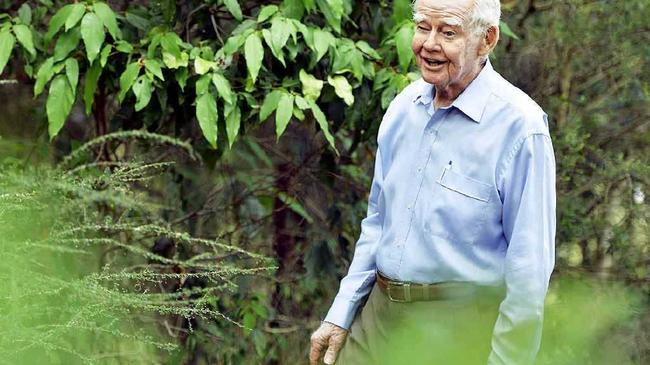Passion for plants helps project flourish
ARNOLD Rieck spends a good deal of his time on the almost two-hectare slice of land known as the Rosewood Scrub Arboretum.

Opinion
Don't miss out on the headlines from Opinion. Followed categories will be added to My News.
ARNOLD Rieck spends a good deal of his time on the almost two-hectare slice of land known as the Rosewood Scrub Arboretum.
This "museum of living trees" at Peace Park, close to his Rosewood home, contains an irreplaceable collection of unique plant species.
If it wasn't for the dedication of Mr Rieck and his helpers in the past 20 years, these Rosewood Scrub treasures might never have been preserved.
Mr Rieck is co-ordinator of the Ipswich SGAP (Society for Growing Australian Plants) project.
He has drawn up a list of 168 plant species - trees, shrubs, grasses - grown around the park, and most of them can't be found in commercial nurseries.
Rosewood Scrub describes the region that encompasses Mt Marrow, Tallegalla, Prenzlau, Marburg, Minden, Fernvale, Lowood, Haigslea, Rosewood and Tarampa.
The name was given by colonial botanist and explorer Allan Cunningham, who famously described the Rosewood Scrub as "impenetrable".
These days, less than 2.5% of that forest remains.
Mr Rieck's arboretum was set up in 1994 so that SGAP would have propagating material for plants from the Scrub.
"It was a park, named for Jack Peace," Mr Rieck says.
"It was part of his farm and he opened the farm up for settlement."
Arnold's good friend and fellow SGAP member Lloyd Bird - the so-called "Environmental Champion of the West" - thought up the idea to start the arboretum.
Plants are put in various sections - there's the "pricklys and spinys" clump at the entrance to Peace Park, rare and endangered species from south-east Queensland close-by, and pioneer timber trees used by early settlers further on.
Many of these plants have medicinal qualities, a vital reason to preserve them, Mr Rieck said.
"I've tried some of them. I haven't had to use the snakebite one," he said.
"One is being investigated at the University of Seattle for its medicinal properties."
Other plants, like the native tamarind and kangaroo vine, are bush tucker.
As a boy scout in his teens, Mr Rieck began to study types of timber to see how well they burnt.
"I was just interested in native plants and that came from my scoutmaster," he said.
Mr Rieck has spent 40 years with SGAP, devotedly collecting seeds and propagating species that could well have disappeared as more and more land was cleared of vegetation.
Thanks to Mr Rieck and SGAP members, Ipswich adopted the native tree eucalyptus curtisii (plunkett mallee) as its floral emblem to replace the bougain
villea, a South American import.
Mr Rieck is grateful to Ipswich City Council for its help with the arboretum, and the Australian Trust for Conservation Volunteers which helped in the early years.
He'd be happy to welcome other volunteers at regular working bees, every fourth Saturday at 2pm.
Afternoon tea is provided.
Call Mr Rieck on 5464 1316 for details.
SGAP Ipswich branch meetings are held on the second Tuesday of the month at the Environmental Education Centre (cnr Goleby and Merle Finimore Avenues), Queens Park, Ipswich.
A business meeting starts at 6.30pm, followed by a guest speaker at 7.30pm.
Excursions are held the weekend following the meeting.
Inquiries to Greg on 0411 099 899.


